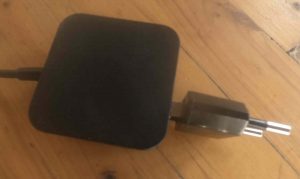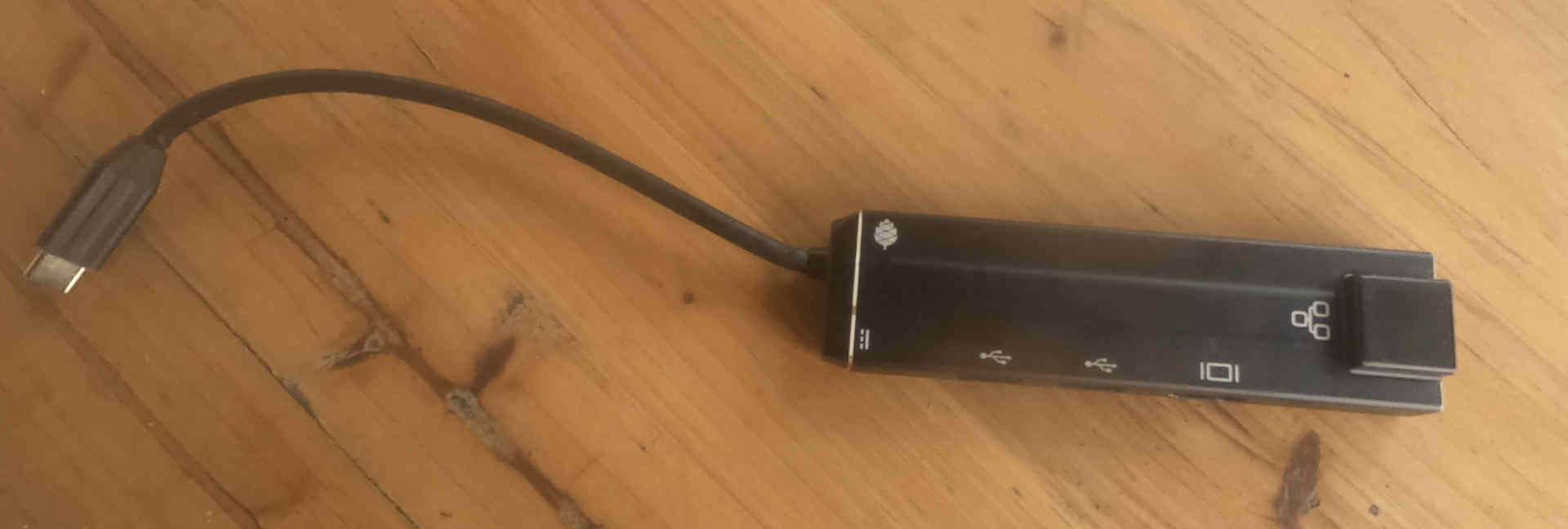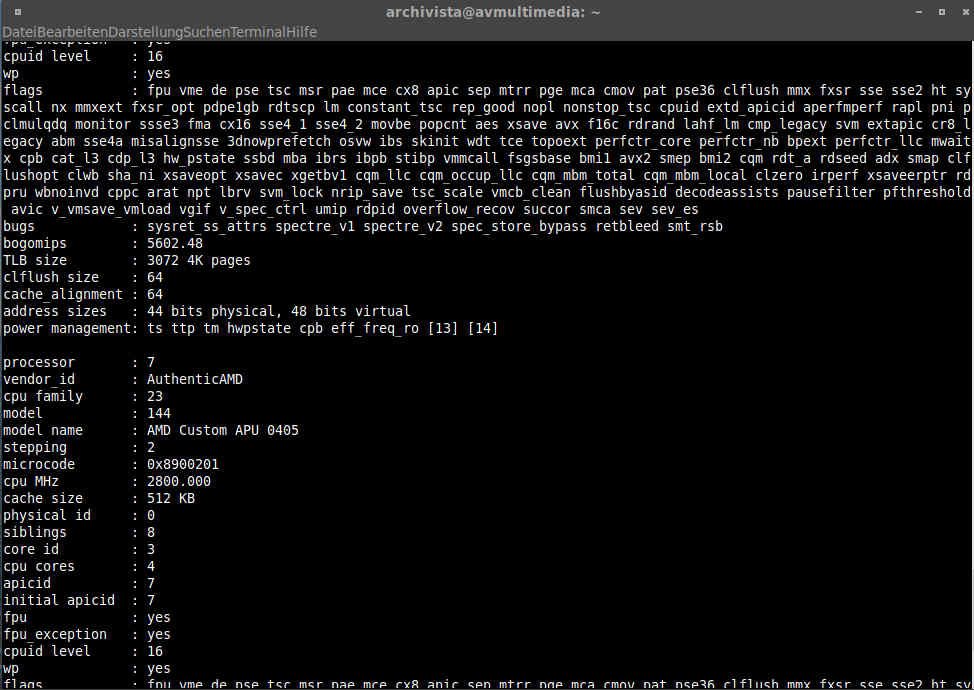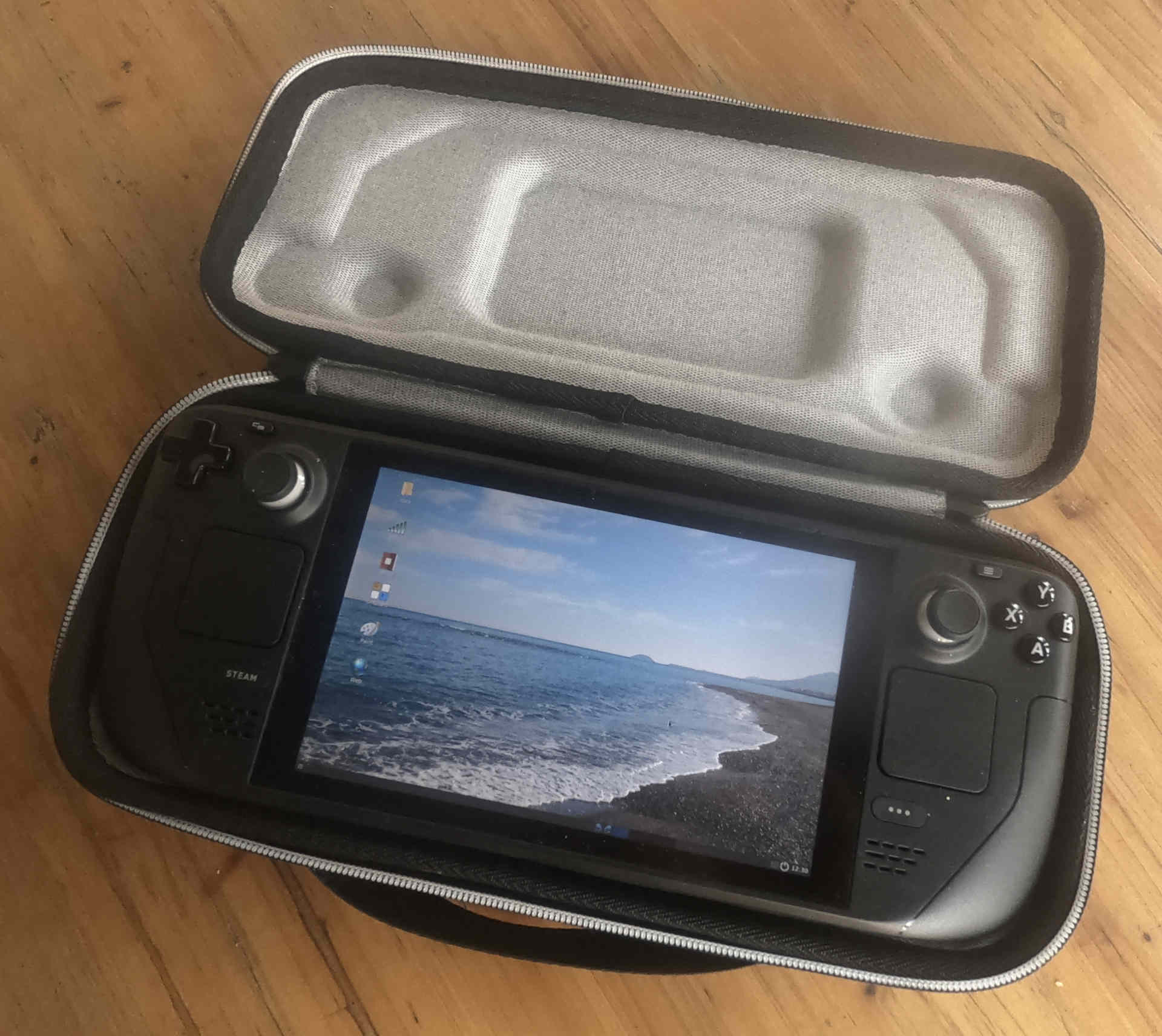Multimedia Open Source Distribution revamped all around
Egg, May 26, 2023: For a few weeks now, a SteamDeck console has been waiting to be equipped with the full-fledged Linux desktop AVMultimedia. After some hurdles had to be overcome during the integration, AVMultimedia is now available for download with an updated Linux kernel 6.1.30. Of course, AVMultimedia runs on almost all common Intel/AMD computers (and with the new release 2023/V on many new computers as well), but the following is primarily about the port to the SteamDeck.
What is SteamDeck?
The SteamDeck is actually a gaming console for the Steam gaming platform. Unlike other gaming consoles, the SteamDeck’s hardware is based on a modern Ryzen processor (4 CPUs or 8 threads, 16 GB RAM). Thus, any desktop software can be installed on the hardware. Even Windows is supposed to run on the SteamDeck. The low weight of less than 700 grams, a touchscreen and an integrated mouse pad make the SteamDeck quite comfortable to work with on the go.
Keyboard inputs can be made via the touch screen and a mouse pad that fits very well in the hand is available for precise “aiming”, which is sometimes necessary in desktop applications. Clicks with the pad can be accomplished very easily by pressing the index finger on the button at the front of the console. This allows working in a way that is not possible with pure tablets.
Furthermore, the SteamDeck has a USBC port. This is used to charge the console and connect other devices at the same time. A corresponding adapter is not included, but such devices are readily available in stores. Furthermore, a clinker headphone port can be attached. There are two buttons at the front for adjusting the volume. This is very practical and is moreover visually displayed on the screen in a visually appealing way.
The SteamDeck can be purchased with 64 GB eMMC, with 256 GB NVMe or 512 GB NVMe hard drive. The prices range from about 500 to 800 francs/euro. This does not make the SteamDeck a bargain, but it is not really expensive compared to the performance. If you have to keep an eye on the budget, 64 GB are of course tight, but the SteamDeck includes a MicroSD card slot, which allows you to easily “expand” the memory by several hundred GB. So much for the hardware.
The SteamDeck is delivered with an in-house Linux. ArchLinux is used as the basis. There is a desktop mode on the in-house distribution. Neither gaming nor working with the desktop was seriously tested. Rather, it was planned from the beginning to equip it with AVMultimedia or the ArchivistaBox.
Standard compliant yes, but with limitations
A first attempt to install AVMultimedia on the SteamDeck succeeded, but the screen was displayed in portrait format. A rotation in the screen settings failed because the previous AVMultimedia version did not recognize the integrated graphics chip (VanGogh) from AMD and instead switched to the compatibility mode (framebuffer, and there the rotation does not work).
This immediately addresses the most important hardware challenge. The 7-inch panel works with a respectable 800×1280 pixels, but rotated by 90 degrees (1280×800 is desired). In order to work “normally”, the screen display always has to be set 90 degrees to the right via software. With an appropriately “fresh” Linux kernel (it should at least be 6.1.x), this can be easily fixed.
However, if you want to mirror the primary screen to a second screen (e.g. beamer presentation), you have to work with two different views. Both screens could be synchronized, but only in such a way that one of the two screens is rotated 90 degrees incorrectly.
It may be that this does not play such a big role in daily practice. But, panels installed in such a way lead to a large part of Linux distributions not displaying correctly after startup. Of course, it is possible to work with the console upright, but without an external mouse or keyboard it is not possible to work.
Sound card and touch screen as stumbling blocks
Anyone who wants to install Linux on new hardware experiences it again and again. Without updated drivers, the endeavor hardly succeeds. The SteamDeck can only be operated with at least Linux kernel 6.1 (according to statements in corresponding forums). The initial release is from January 2023, and the corresponding firmware files are necessary.
Nevertheless, the sound card did not want to make a sound even after days of tedious work. Even using distributions like Manjaro (only the Plasma version booted) or Ubuntu didn’t help, because the sound was missing there, too. After a long search I found a special ISO for the SteamDeck at https://batocera.org. This worked 100% perfectly. However, a desktop does not contain an open source distribution created for retro games, of course.
Nevertheless, based on the SSH access (root/linux), it was possible to find out what the problem was. Besides the appropriate kernel and firmware drivers, additional configuration files for the sound card are necessary. Appropriate hints could be found at https://gitlab.com/open-sd/acp5x-ucm-files.
With this, sound could at least be enjoyed via the headphone output. In order to route the audio signals to the loudspeaker, adjustments in /etc/pulse/default.pa were necessary. The corresponding entries are of a very technical nature and can therefore be found directly on the AVMultimedia ISO file.
A bit less complex, but still challenging was to find the right kernel modules for the SteamDeck’s touch screen. The kernel configuration file between Batocera and AVMultimedia showed several thousand lines of differences; activating the right candidates here, it was a gauntlet. After about 10 new kernel variations it was done. Hallelujah!
Conclusion: 950 grams for the ultimate mobile desktop feeling
 The SteamDeck weighs 676 grams, the power supply 162 grams. It is practical that the European two-pin connector can simply be removed and the box can be used in the USA/Canada without an adapter. The picture shows the plugged EU adapter. It goes without saying that the SteamDeck should only be powered up with the EU adapter fully plugged in, the only purpose of the above illustration is to show how elegant the adapter solution is.
The SteamDeck weighs 676 grams, the power supply 162 grams. It is practical that the European two-pin connector can simply be removed and the box can be used in the USA/Canada without an adapter. The picture shows the plugged EU adapter. It goes without saying that the SteamDeck should only be powered up with the EU adapter fully plugged in, the only purpose of the above illustration is to show how elegant the adapter solution is.
Now, the SteamDeck is not complete without the USB kit, which adds another 50 grams plus/minus. All added up, it is thus about 890 grams. As much as typing on the touch screen is fast, there is not much space left for working on the 7-inch display in the end. An external keyboard is therefore certainly helpful. Thanks to USB and/or Bluetooth, this can be done easily.
An Epic laser keyboard from Celluon was found in the “in-house” storage. With about 60 grams, the total weight is raised to 950 grams, but you can write much faster with it — and thus the part belongs to the mobile equipment. By the way, it should be mentioned here that the use of Bluetooth with the kernel 6.1.x finally works without “obstacles”.
The transport bag, on the other hand, is met with mixed enthusiasm. Admittedly, the display has to be well protected somehow. However, the weight of over 350 grams is considerable.
This brings the SteamDeck upgrade for AVMultimedia and the ArchivistaBox.
Those who have a SteamDeck will finally find a desktop that works quite well on the SteamDeck with the updated AVMultimedia distribution. Unfortunately, during the development of AVMultimedia it had to be observed that the SteamDeck is not optimally supported by the “top dogs” (e.g. missing rotation of the screen or no sound). Here AVMultimedia finally offers a desktop for the SteamDeck.
In the first place, however, the current release of the AVMultimedia distribution brings an all-around renewed interface for all those who want to work with current hardware. Thanks to Linux kernel 6.1.x, AVMultimedia is thus updated again for the near future. AVMultimeida 2023/05 is based on the stable version of Devuan Chimaera. Of course, the next generation testing version could have been used.
However, far more important than updated software on the desktop is the appropriate substructure, since only with it current hardware can be used without problems. The Longterm kernel 6.1.x offers an ideal prerequisite for the next few years. The ISO file for this release can be found (matching the kernel) under the name avmultimedia6.iso here:
https://sourceforge.net/projects/archivista/files/
https://osdn.net/projects/avmultimedia/releases/
Our ArchivistaBox customers should be told at this point that with the updated substructure (the ArchzivistaBox was migrated at the same time) the software is available for the next major release. Already now it can be said that the update process will be very simple (online update is sufficient). A few selected customers are already working with the updated substructure, but the new major branch will probably not be officially released until next year.
Nevertheless, the corresponding work is essential for the ArchivistaBox. This is the only way to ensure that we can continue to deliver up-to-date hardware to our customers in a few years’ time.
Finally, this: The SteamDeck works very quickly. Booting up AVMultimedia (setting up all the software over about 6 GBytes) takes about 8 to 10 seconds. Even 4K videos can be edited and rendered with the integrated Ryzen processor. Not quite as fast as with the fastest AMD or Apple M1 behemoths, but still quite decent. Even virtualization can be managed effortlessly with the SteamDeck. From this point of view, the SteamDeck is absolutely not a toy, but a hard workhorse.





